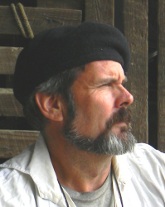You are hereFaux-immitation barn-cabin boards for stage cabin
Faux-immitation barn-cabin boards for stage cabin
The friendly crew at A Welding was given the job of making a small cabin to be used at a convention in Texas. It had to be lightweight and portable, and transport in a small area. So they made it from box tube aluminum, with a porch floor that folds up and a porch roof that retracts (slides into) the cabin. I've seen lots of old cabins around here, as well as old barns, so I have a good amount of reference material. The work is being done at:
.
A Welding & Fabrication Shop
330 Wears Valley Road, Pigeon Forge Tn. 37863
Phone (865) 428-5555
email: aweldingfabricationshop@yahoo.com
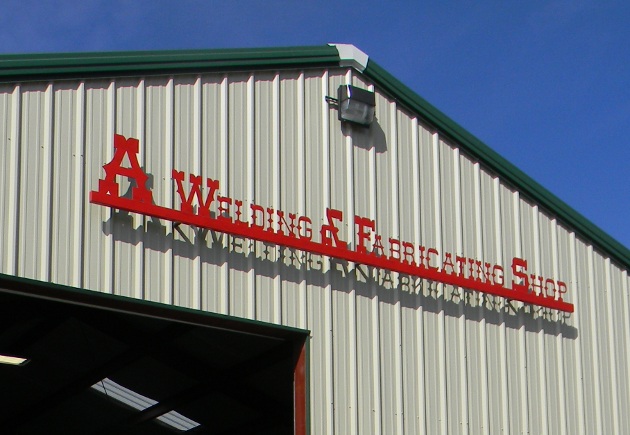
.
These old boards lose about all their color and end up a neutral gray. We couldn't use real barn boards because they would be too heavy; so plywood was substituted. The crew cut the plywood to fit, and routed grooves in the pieces. Another part of this cabin was the door, which was made to look like boards nailed and overlapping. It can be seen on this page:
Faux chimney rocks for stage
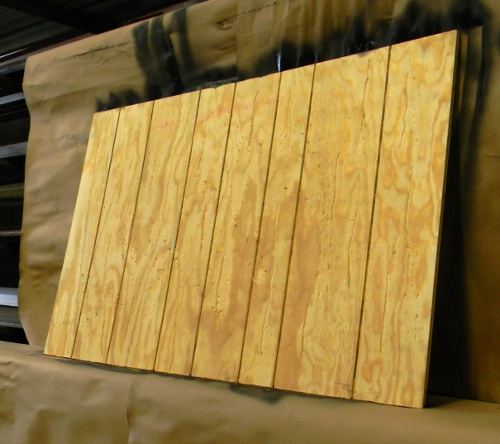
Next I sprayed flat black latex paint into the grooves with a detail gun.
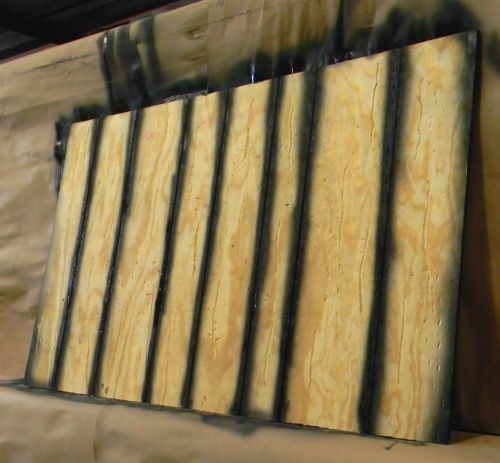
After this I used a roller to apply flat gray latex to the flat areas, being careful not to push down hard enough to make the paint go in the grooves. When mixing or buying your gray, don't get too cold-blue of a gray, be sure to get one that is warmer tan-ish, but not pink. The colors for this project were easy to get, I went to the nearby Pittsburgh Paint store, and selected paint chip samples. I got a gallon of flat gray, a quart of flat black, a quart of flat light yellow-ish tan, and a quart of flat algae-moss (yuck) green. Notice the extra scrap piece of plywood in the picture. This is to get the paint more even on the roller, similar to a rubber roller on glass for block printing.
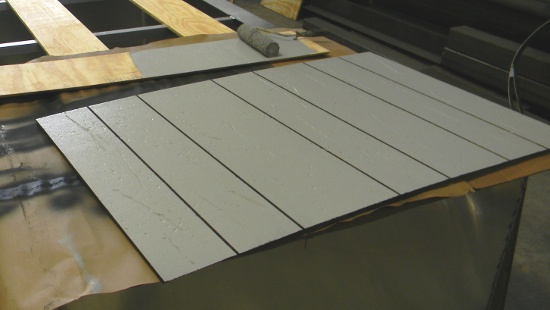
Next I got a couple scrap pieces of sheet metal to use as guard-stencils. I laid them in a way to apply the light tan on certain boards. You want it to look random, don't establish a pattern as to which boards are done. Also, this flat gray base color is very sensitive to the colors applied over it, so you need to mist it on very lightly. It's kind of tricky because in reality these boards wouldn't have warm colors remaining in them. What I want to do is visually separate the boards from one another, without relying too much on value. Value is a color term that refers to light and dark only, totally apart from considerations of hue, chroma, tint and shade. You can see the tan applied to the boards in the background of this picture.
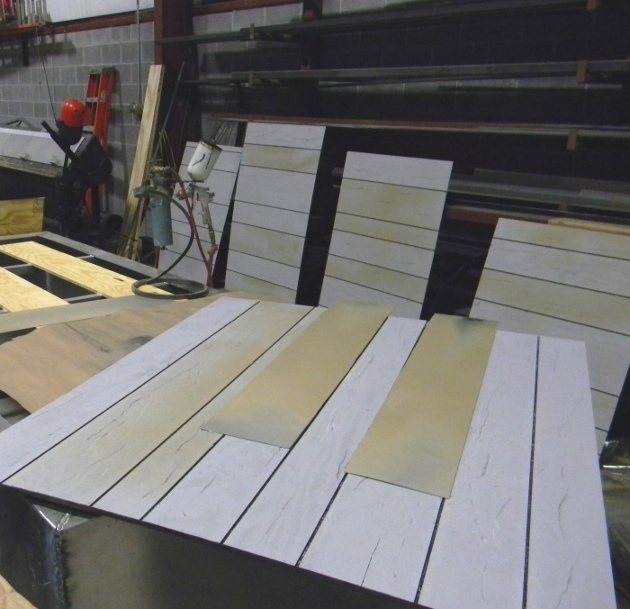
The next step is to randomly spray some darker gray, but not much darker. This is the base gray with a little black added. You can see a scrub brush laying in the picture. I used this to streak the darker gray up and down. It was a nice effect, but the paint dried so fast that it didn't work so well most places. Also, a big drawback was that the gray underneath was only dry on the surface, this brush lifted paint in ways I didn't want.
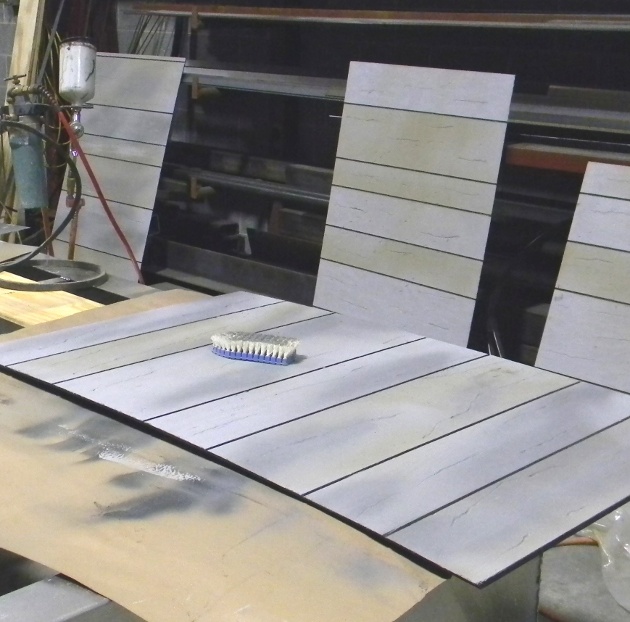
Finally, I spayed the moss color. These two boards are the upper pieces, they have quite a bit more green than the lower pieces. My reasoning is that the moss would grow more up under the shaded places. Notice how it's not applied evenly, and I bring it down along the edges of the boards, as it would grow in reality.
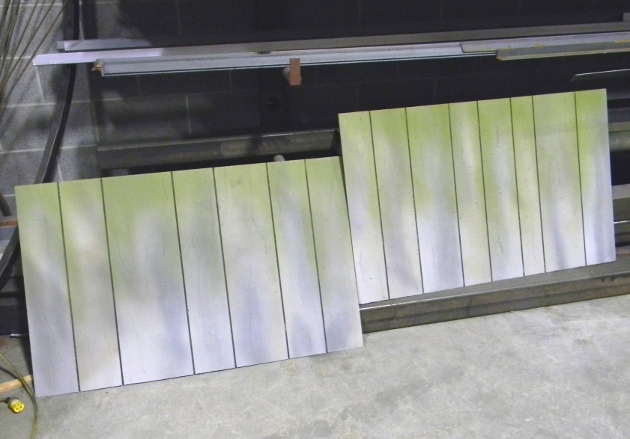
Below is one of the lower pieces, and below that a close up of the distressing the crew did before I started painting.
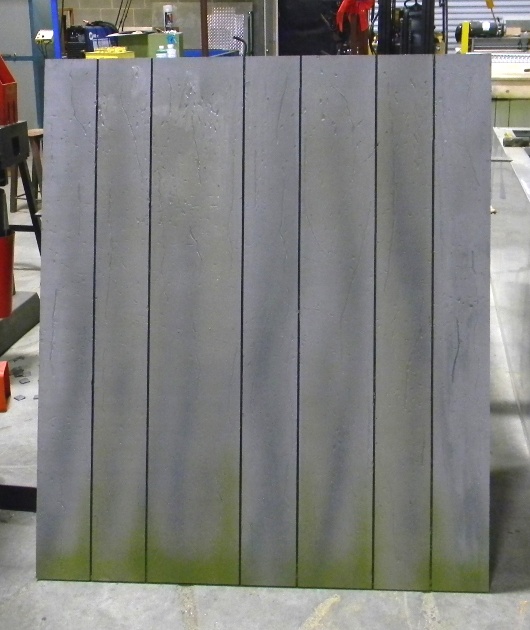
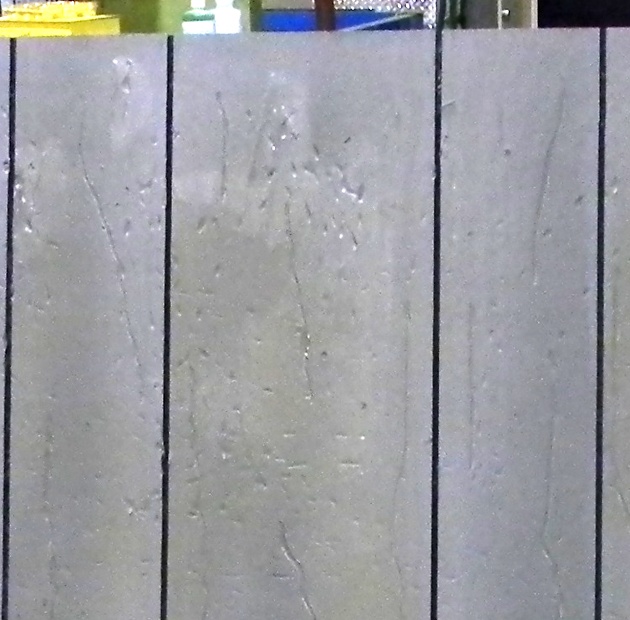
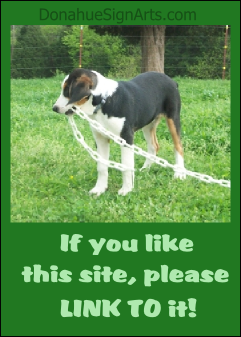 link to
link to
